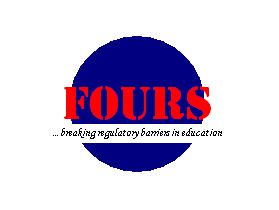Small
private schools flourishing in some unlikely places
By LINDA SEEBACH
Scripps Howard News Service
02-DEC-05
Amid
some of the direst poverty in the world, small private schools are flourishing, powerful testimony to parents' determination
to provide an education for their children.
James
Tooley discovered that during a consulting job in Hyderabad, India, when he "stumbled across a crowd of private schools in slums behind the Charminar,
the 16th-century tourist attraction in the central city."
With
a grant from the John M. Templeton Foundation, Tooley and his researchers have gone looking for similar schools in Ghana, Nigeria, Kenya, India and China _ and found them, in great numbers, everywhere they looked.
Overall,
they do as well as or better than official schools _ if there even are any official schools _ with comparably disadvantaged
children.
Tooley,
a professor of education policy at the University of Newcastle
upon Tyne, in England, wrote about his study for the fall issue of Education Next, published by the Hoover Institution at Stanford
University (at educationnext.org).
This
is not an insignificant part of the country's educational system. In Ga, Ghana, which has a population of about 500,000, researchers
found nearly 800 schools, about a quarter of them government, half private but recognized by the government, and a quarter
private and not recognized. The government schools were larger, but still, 33,000 children, about 15 percent of those enrolled
in school, were in unrecognized private schools.
The
monthly fee for an unrecognized private school averages $4, but Ga is so poor that even such a tiny amount is 12 percent of
average adult monthly earnings. Many of the poorest schools allow parents to pay by the day, so a child can attend for as
many days as her parents can afford. Government schools are often out of reach for the poorest because a child's fees have
to be paid in full before the term starts.
Sometimes
the government doesn't even know there are such schools serving the poor. Chinese officials told Tooley that what he was describing
was "logically impossible" since China has universal education, available to poor and rich alike. In all of Gansu
province, roughly the size of Texas, provincial officials knew of only 44 private schools, all for city elites.
Yet
spread out in tiny and remote villages, Tooley's team found nearly 700 schools with a total enrollment of 61,000.
In
Kibera, a slum district of Nairobi, researchers found 76 private schools with 12,000 students. But there had been more. In
January 2003, the government of Kenya abolished public-school fees and proclaimed that the introduction of free primary
education would lead to enrolling 1.3 million children who had never been in school.
Enrollment
in Kibera's private schools dropped sharply, and many of them had to close. But only five government primary schools served
all of Kibera, and thousands of children who had been in private schools never enrolled again.
The
international aid donors who subsidized the end of school fees must be proud of the consequences of their efforts.
Facilities
and resources vary, with some comparisons favoring government schools and some private. In Ghana, government schools were more likely to have desks and playgrounds, but less likely to have toilets and drinking water
for the children.
Absenteeism
was higher in government schools _ in Ga, barely half the teachers were actually teaching when researchers arrived unannounced.
Classes
were larger, too, with student-teacher ratios of 42:1 in Hyderabad government schools, compared
with 22:1 in unrecognized private schools (recognized private schools were in between).
And
what about achievement? The researchers tested about 3,000 students in each country in English and math, and in various other
subjects depending on location. Though that analysis has only begun, in every case so far, achievement for students in private
schools, whether recognized or not, was at or above levels for their counterparts in government schools, sometimes strikingly
so.
Of
course it is conventional wisdom in the United States that private schools are better, though people disagree about whether
that's simply because they enroll children who have more advantages to start with. But the children in Tooley's schools have
no advantages.
"Ironically,"
he says, "perhaps the accepted wisdom does seem to be right on one point: private is better than public. Of course, no one
suspected that private slum schools would be better," schools "that development experts dismiss, if they acknowledge their
existence at all, as being of poor quality."
Tooley's
work obviously bears on the question of school choice in the United States,
and especially on the assumption that private schools are for the rich, and everybody else, but especially the poor, needs
public education.
Where
he has been doing his research, "the poor have found remarkably innovative ways of helping themselves, educationally, and
in some of the most destitute places on Earth have managed to nurture a large and growing industry of private schools for
themselves."
And,
as he so reasonably asks, why can't we?
(SOURCE:Contact Linda Seebach at Rocky
Mountain News, http://rockymountainnews.com.)

